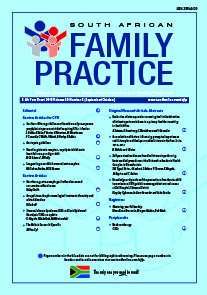Stevens-Johnson Syndrome (SJS) and Toxic Epidermal Necrolysis (TEN): an update
Keywords:
Steven-Johnsons syndrome (SJS), toxic epidermal necrolysis (TEN), granulysin, supportive care, hypersensitivity, immunomodulating
Abstract
Stevens-Johnson syndrome (SJS) is a form of toxic epidermal necrolysis (TEN) a rare but life-threatening hypersensitivity reactions that affect the skin and mucous membranes. The most common triggers are drugs, but they can also be triggered by infections. Granulysin has been recently identified as the major molecule responsible for the widespread keratinocyte necrosis. Early identification and removal of causative agent is crucial in preventing progression of condition and reducing patient mortality. Supportive care is often recommended over immunomodulating treatments as it helps improve patient outcome.
Section
Review Articles
By submitting manuscripts to SAFP, authors of original articles are assigning copyright to the South African Academy of Family Physicians. Copyright of review articles are assigned to the Publisher, Medpharm Publications (Pty) Ltd, unless otherwise specified. Authors may use their own work after publication without written permission, provided they acknowledge the original source. Individuals and academic institutions may freely copy and distribute articles published in SAFP for educational and research purposes without obtaining permission.

